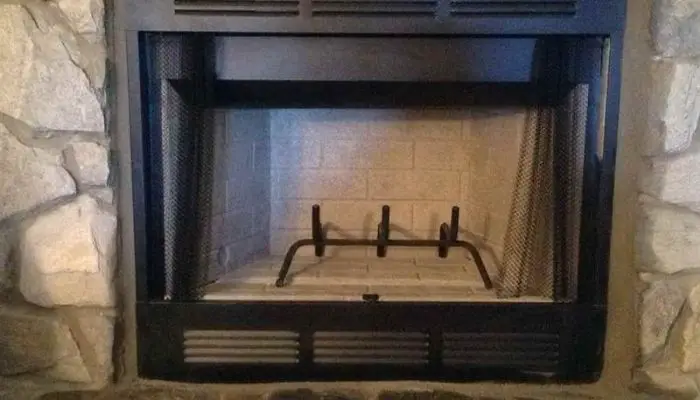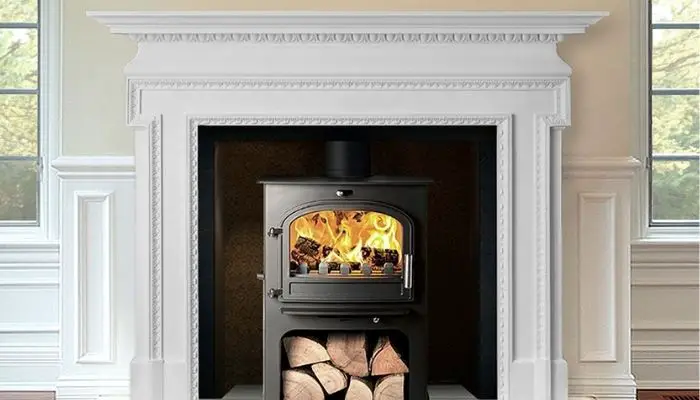Yes, outdoor fireplaces can keep you warm. But the amount of warmth depends on the type of the outdoor fireplace. Most outdoor fireplaces are made from fireproof materials like stucco, stone, and steel. Wood and propane are the primary sources of energy for outdoor fireplaces. Natural gas and electric fireplaces can be used outdoors, but they are not common.
The amount of heat an outdoor fireplace can produce ranges between 10,000BTUs and 20,000BTUs. This is a bigger range of heat than indoor fireplaces. Wind and cold outdoor weather carry away some of the heat. Some outdoor fireplaces produce more heat than others. This article will explain different types of outdoor fireplaces and the amount of heat they can produce.
Types of Outdoor Fireplaces and the Amount of Heat They Give Off
1. Fire pits
This is the first type of fireplace that comes to mind when you hear outdoor fireplaces. You can make one at home or buy a ready-made product. The homemade version of the fire pit looks like a campfire. Stones are arranged in a circle, and a fire is lit in the middle. The amount of heat depends on the size of the ring.
On average, a firepit can give off 10,000BTUs of heat. The area is open; hence most of the heat is lost in the air. In-ground fire pits are the trend nowadays. If you don’t have time for DIY fire pits, use the ready-made one. Heavy metals like steel, iron, and copper construct such fireplaces. And they can produce heat up to 15,000BTUs.
2. Fire Bowls
Fire bowls are closely related to fire pits. Fire bowls are built in the ground or raised above the ground and give it a ring. In simple terms, it is a huge plate that is lit inside. Fire bowls are portable and a little bit smaller than fire pits. They can give off 12,000BTUs of heat. You can place your fire bowl in a shade when it is raining, or snow is falling.
Fire bowls come in numerous designs and styles. The designs range from traditional to modern. Propane and natural gas are the main energy sources for a fire bowl. Some traditional fire bowls use coal. The source of energy also determines the amount of heat you will receive. Natural gas produces the highest amount of heat.
3. Fire tables
Fire tables are said to be the climax of outdoor fireplaces. This is a table that has a fire pit in the middle. This multipurpose table provides heat and fashion to your outdoor space. Most of such fireplaces are electric or gas. The maximum amount of heat they can give off is 20,000BTUs. They have control knobs that allow you to reduce or increase the amount of heat.
Fire tables come in various styles, starting from coffee tables, bar tables, and dining tables. Match the type of table with your outdoor setting for an elegant look. Also, smaller tables are more portable than big ones. You can choose the traditional designs or the modern ones.
4. Fire columns
This type of outdoor fireplace combines the features of a fire pit and fire bowl. It is a long cylinder with space at the top for fire. They mainly use natural gas and propane as the source of energy. Wood and stone are the materials used to build a fire column. The interior is full of heavy metals like steel. It can produce heat of 10,000BTUs.
5. Patio heaters
A patio heater is not exactly a fireplace, but its intended purpose is the same as an outdoor fireplace. It will provide warmth to your outdoor space. Patio heaters come in various forms like wall mount, table tops, and ceiling. Most patio heaters produce heat ranging from 10,000BTUs and 30,000BTUs. Most patio heaters are portable and save you a lot of energy.
Conclusion
Outdoor fireplaces also give off heat and keep you warm. Weather and the outdoor environment affect the amount of heat that you receive. An excellent outdoor fireplace must give off 10,000BTUs to 35,000BTUs. The type of outdoor fireplace also affects the amount of heat you receive. Lastly, the energy source can also affect the amount of heat released.


